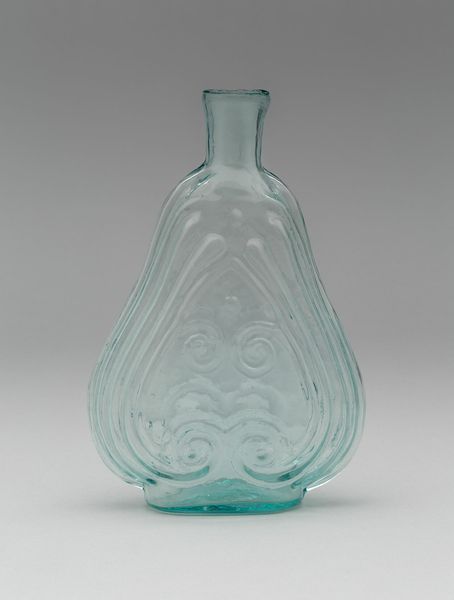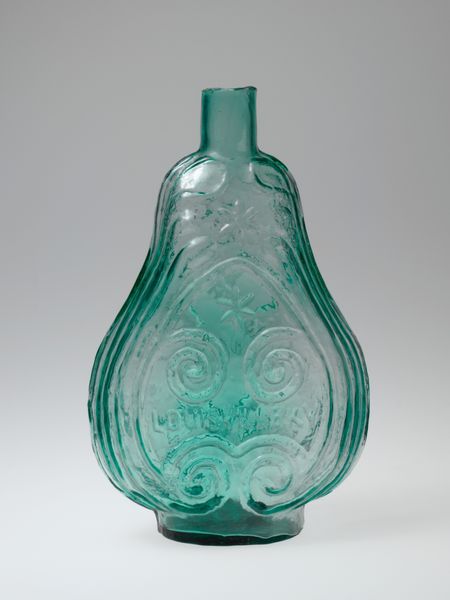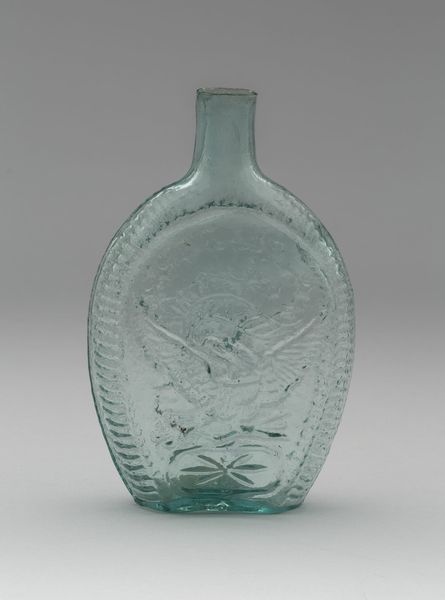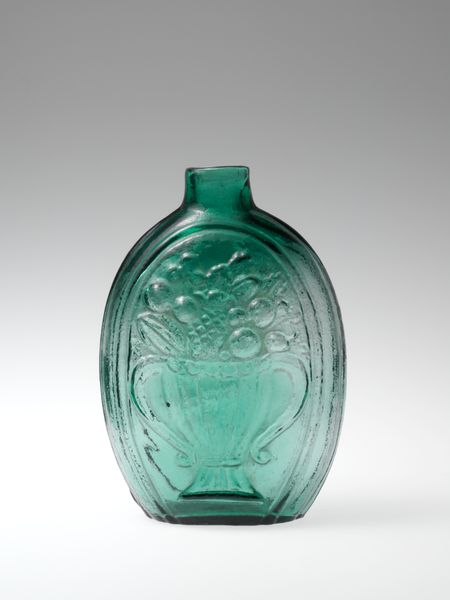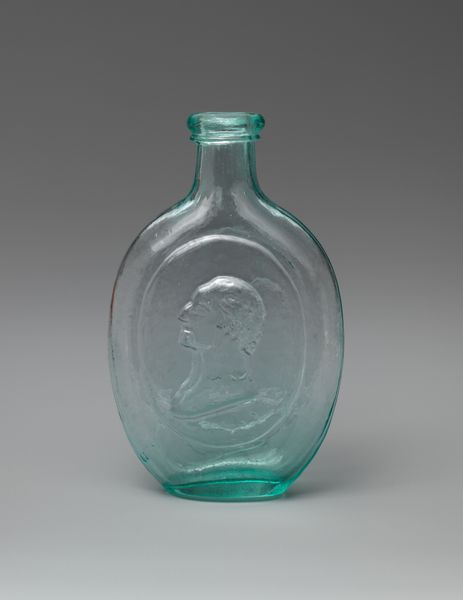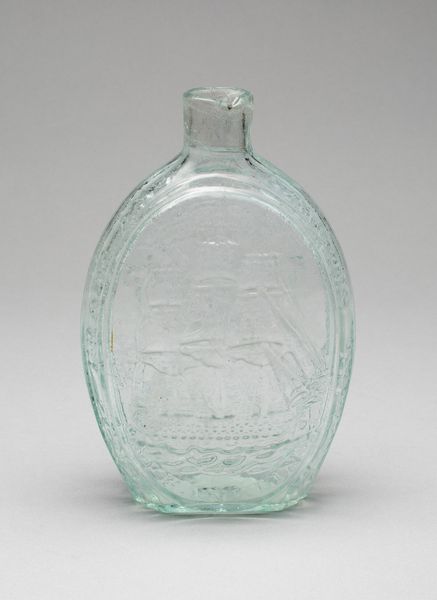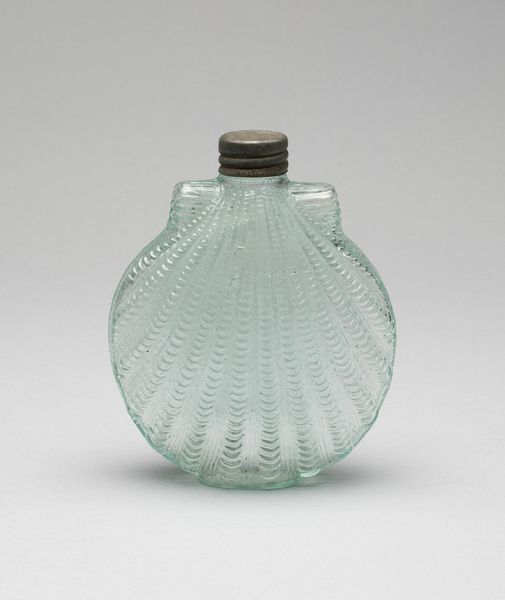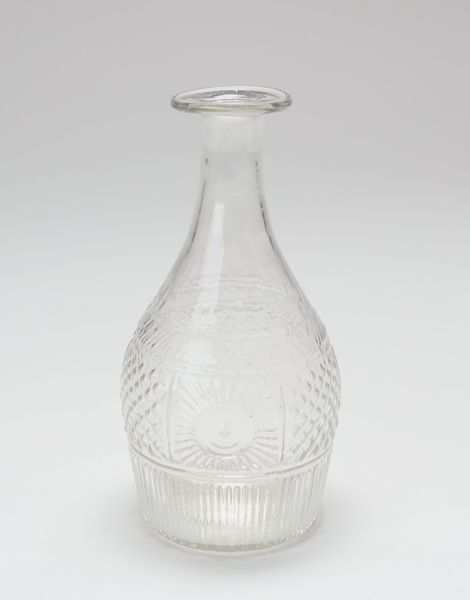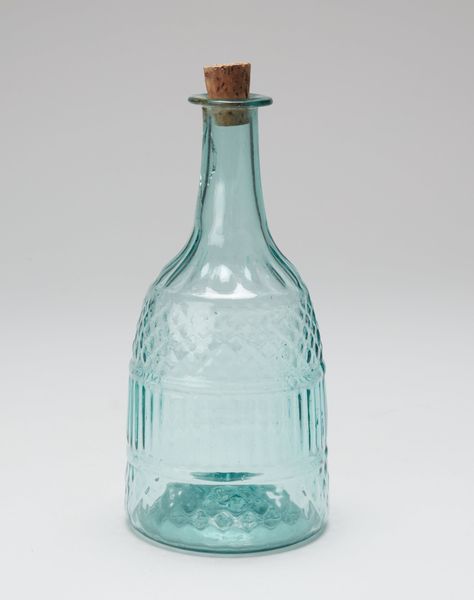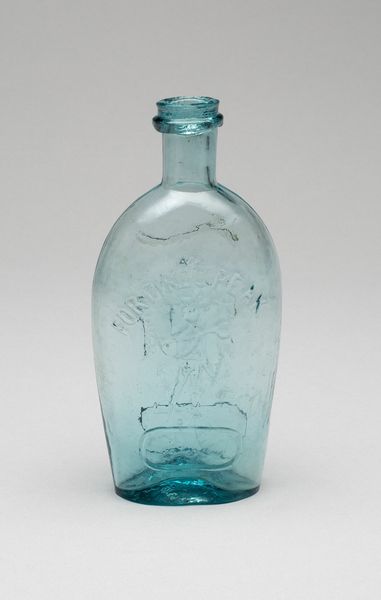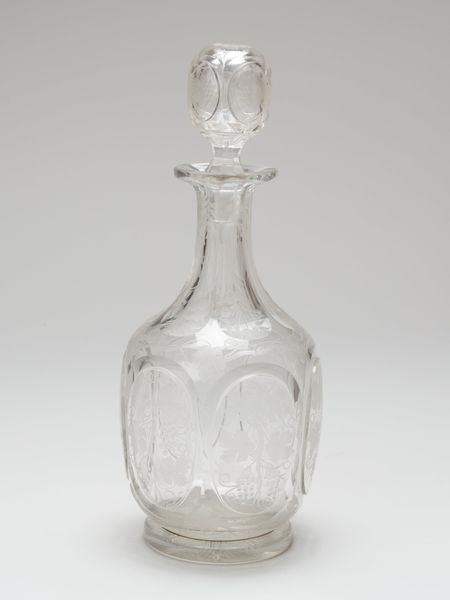
glass
#
glass
#
decorative-art
Dimensions: H.: 19.1 cm (7 1/2 in.)
Copyright: Public Domain
Curator: So, what catches your eye first about this glass flask, crafted anonymously between 1840 and 1860 and held in the Art Institute of Chicago? Editor: It’s so whimsical, isn't it? Almost cartoonish in its curves. Like a potion bottle straight out of a fairytale. It seems too delicate to be functional, more ornamental. Curator: It’s fascinating to consider its place in the decorative arts of the mid-19th century. Glass production was becoming more industrialized, which impacted both the availability and the style of everyday objects. These pieces were often meant to evoke hand-crafted artistry while still catering to mass production aesthetics. Editor: You know, the color, the subtle imperfections in the glass – it gives the illusion that I've plucked it right out of the ocean. It looks fragile but has a strong feeling about it. Does that even make sense? Curator: Absolutely! The greenish tint likely comes from impurities in the glassmaking process of the time. Imperfections often gave mass-produced items a patina of uniqueness. It catered to middle-class consumers eager for individualized pieces but lacked access to truly bespoke items. Editor: It makes me think of alchemists and their concoctions, of forbidden knowledge brewing within the glass. Were these bottles used for perfumes or… something a little stronger? Curator: Possibly both! These flasks could’ve contained anything from cologne to spirits. What I find truly interesting is how an object like this connects to the developing consumer culture, where mass production allowed for greater access to goods that once signified luxury. Editor: It’s funny to think of something so… mass-produced conjuring up feelings of mystery and antiquity. You're totally right. This bottle's journey to my brain really took its own winding path. I love objects that spark stories. Curator: Me too, especially when they highlight the complex relationships between commerce, aesthetics, and everyday life. Editor: Absolutely. The magic isn't in the glass itself, it is in our hands now, holding, watching and talking.
Comments
No comments
Be the first to comment and join the conversation on the ultimate creative platform.
